1.はじめに
今回ご紹介するのは、ファインチューニングしたCLIPを活用することによって従来よりもきめ細やかな画像キャプショニングを可能にする CLIP reward という技術です。
*この論文は、2022.5に提出されました。
2.CLIP reward とは?
下記の図が CLIP reward の概要です。左側は、CLIP Reward for Descriptive Captioning と呼び、 CLIP を活用した一般的な画像キャプショニングの学習の流れを表しています。画像と Captioning Model が生成した文 を CLIP に入力して類似度を計算し、その類似度が最大化する様に Captioning Model にフィードバックを掛けます。今回のポイントは、この左側の学習の前に右側の ファインチューニングをやっておくことです。
右側のImprove Grammar by Finetuning Text Encoder を説明します。 Caption(参照キャプション)と Caption に Noise処理(ランダム繰り返し/削除/挿入/交換/シャッフル)をして生成した Negative Caption を CLIP のText Enc(テキストエンコーダ)に入力します。次の Grammar Reward は バイナリクロスエントロピーを使用して Caption なら「1」、Negative Caption なら「0」と目標設定します。
そして、Text Enc とGrammer Reward を共同で Finetuning することによって CLIPに文法的な知識を注入することが出来、きめ細やかな画像キャプショニングが可能になります。

3.コード
コードはGoogle Colabで動かす形にしてGithubに上げてありますので、それに沿って説明して行きます。自分で動かしてみたい方は、この「リンク」をクリックし表示されたノートブックの先頭にある「Colab on Web」ボタンをクリックすると動かせます。
まず、セットアップを行います。device : cuda, reward : clips_grammar の設定で実行します。
|
1 2 3 4 5 6 7 8 9 10 11 12 13 14 15 16 17 18 19 20 21 22 23 24 25 26 27 28 29 30 31 32 33 34 35 36 37 38 39 40 41 42 43 44 45 46 47 48 49 50 51 52 53 54 55 56 57 58 59 60 61 62 63 64 65 66 67 68 69 70 71 72 73 74 75 76 77 78 79 80 81 82 83 84 85 86 87 88 89 90 91 92 93 94 95 96 97 98 99 100 101 102 103 104 105 106 107 108 109 110 111 112 113 114 115 116 117 118 119 120 121 122 123 124 125 126 127 128 129 130 131 132 133 134 135 136 137 138 139 |
#@title **setup** # Git clone ! git clone https://github.com/cedro3/CLIP-Caption-Reward.git %cd /content/CLIP-Caption-Reward # Install library !pip install -r requirements.txt !pip uninstall -y torchtext # to bypass pt-lightning issue (https://github.com/PyTorchLightning/pytorch-lightning/issues/6415) !pip install -e . # Import library import torch import torch.nn as nn import numpy as np import json import captioning.utils.opts as opts import captioning.models as models import captioning.utils.misc as utils import pytorch_lightning as pl from function import display_pic # Checkpoint class class ModelCheckpoint(pl.callbacks.ModelCheckpoint): def on_keyboard_interrupt(self, trainer, pl_module): # Save model when keyboard interrupt filepath = os.path.join(self.dirpath, self.prefix + 'interrupt.ckpt') self._save_model(filepath) # Device and model configurations device = 'cuda' #@param ["cuda", "cpu"] {allow-input: true} reward = 'clips_grammar' #@param ["mle", "cider", "clips", "cider_clips", "clips_grammar"] {allow-input: true} if reward == 'mle': cfg = f'./configs/phase1/clipRN50_{reward}.yml' else: cfg = f'./configs/phase2/clipRN50_{reward}.yml' print("Loading cfg from", cfg) opt = opts.parse_opt(parse=False, cfg=cfg) # Doenload pretraied checkpoint import gdown if reward == "mle": url = "https://drive.google.com/drive/folders/1hfHWDn5iXsdjB63E5zdZBAoRLWHQC3LD" elif reward == "cider": url = "https://drive.google.com/drive/folders/1MnSmCd8HFnBvQq_4K-q4vsVkzEw0OIOs" elif reward == "clips": url = "https://drive.google.com/drive/folders/1toceycN-qilHsbYjKalBLtHJck1acQVe" elif reward == "cider_clips": url = "https://drive.google.com/drive/folders/1toceycN-qilHsbYjKalBLtHJck1acQVe" elif reward == "clips_grammar": url = "https://drive.google.com/drive/folders/1nSX9aS7pPK4-OTHYtsUD_uEkwIQVIV7W" gdown.download_folder(url, quiet=True, use_cookies=False, output="save/") # --- Load vocabulary --- url = "https://drive.google.com/uc?id=1HNRE1MYO9wxmtMHLC8zURraoNFu157Dp" gdown.download(url, quiet=True, use_cookies=False, output="data/") dict_json = json.load(open('./data/cocotalk.json')) print(dict_json.keys()) ix_to_word = dict_json['ix_to_word'] vocab_size = len(ix_to_word) print('vocab size:', vocab_size) seq_length = 1 opt.vocab_size = vocab_size opt.seq_length = seq_length # --- Load Model checkpoint --- opt.batch_size = 1 opt.vocab = ix_to_word # opt.use_grammar = False model = models.setup(opt) del opt.vocab ckpt_path = opt.checkpoint_path + '-last.ckpt' print("Loading checkpoint from", ckpt_path) raw_state_dict = torch.load( ckpt_path, map_location=device) strict = True state_dict = raw_state_dict['state_dict'] if '_vocab' in state_dict: model.vocab = utils.deserialize(state_dict['_vocab']) del state_dict['_vocab'] elif strict: raise KeyError if '_opt' in state_dict: saved_model_opt = utils.deserialize(state_dict['_opt']) del state_dict['_opt'] # Make sure the saved opt is compatible with the curren topt need_be_same = ["caption_model", "rnn_type", "rnn_size", "num_layers"] for checkme in need_be_same: if getattr(saved_model_opt, checkme) in ['updown', 'topdown'] and \ getattr(opt, checkme) in ['updown', 'topdown']: continue assert getattr(saved_model_opt, checkme) == getattr( opt, checkme), "Command line argument and saved model disagree on '%s' " % checkme elif strict: raise KeyError res = model.load_state_dict(state_dict, strict) print(res) model = model.to(device) model.eval(); # --- Load CLIP image encoder --- import clip from torchvision.transforms import Compose, Resize, CenterCrop, ToTensor, Normalize from PIL import Image from timm.models.vision_transformer import resize_pos_embed clip_model, clip_transform = clip.load("RN50", jit=False, device=device) preprocess = Compose([ Resize((448, 448), interpolation=Image.BICUBIC), CenterCrop((448, 448)), ToTensor() ]) image_mean = torch.Tensor([0.48145466, 0.4578275, 0.40821073]).to(device).reshape(3, 1, 1) image_std = torch.Tensor([0.26862954, 0.26130258, 0.27577711]).to(device).reshape(3, 1, 1) num_patches = 196 #600 * 1000 // 32 // 32 pos_embed = nn.Parameter(torch.zeros(1, num_patches + 1, clip_model.visual.attnpool.positional_embedding.shape[-1], device=device),) pos_embed.weight = resize_pos_embed(clip_model.visual.attnpool.positional_embedding.unsqueeze(0), pos_embed) clip_model.visual.attnpool.positional_embedding = pos_embed |
images フォルダに格納されているサンプル画像を見てみましょう。自分の用意した画像を使いたい場合は、このフォルダに画像(jpg)をアップロードして下さい。
|
1 2 |
#@title display sample picture display_pic('images') |

それでは、画像キャプショニングをやってみましょう。picture:に表示されたサンプル画像の中からファイル名を選んで記入し実行します。
|
1 2 3 4 5 6 7 8 9 10 11 12 13 14 15 16 17 18 19 20 21 22 23 24 25 26 27 28 29 30 31 32 33 34 35 36 37 38 39 40 41 42 43 44 45 46 47 48 49 50 51 52 53 54 55 |
#@title **Generate caption** # --- Extract visual feature --- picture = '04.jpg'#@param {type:"string"} img_path = 'images/'+picture # display image from IPython.display import Image as show_imge from IPython.display import display display(show_imge(img_path)) with torch.no_grad(): image = preprocess(Image.open( img_path ).convert("RGB")) image = torch.tensor(np.stack([image])).to(device) image -= image_mean image /= image_std tmp_att, tmp_fc = clip_model.encode_image(image) tmp_att = tmp_att[0].permute(1, 2, 0) tmp_fc = tmp_fc[0] att_feat = tmp_att fc_feat = tmp_fc # --- Generate caption --- # Inference configurations eval_kwargs = {} eval_kwargs.update(vars(opt)) verbose = eval_kwargs.get('verbose', True) verbose_beam = eval_kwargs.get('verbose_beam', 0) verbose_loss = eval_kwargs.get('verbose_loss', 1) # dataset = eval_kwargs.get('dataset', 'coco') beam_size = eval_kwargs.get('beam_size', 1) sample_n = eval_kwargs.get('sample_n', 1) remove_bad_endings = eval_kwargs.get('remove_bad_endings', 0) with torch.no_grad(): fc_feats = torch.zeros((1,0)).to(device) att_feats = att_feat.view(1, 196, 2048).float().to(device) att_masks = None # forward the model to also get generated samples for each image # Only leave one feature for each image, in case duplicate sample tmp_eval_kwargs = eval_kwargs.copy() tmp_eval_kwargs.update({'sample_n': 1}) seq, seq_logprobs = model( fc_feats, att_feats, att_masks, opt=tmp_eval_kwargs, mode='sample') seq = seq.data sents = utils.decode_sequence(model.vocab, seq) print(sents) |

もう1つやってみましょう。今度は、picture : 43.jpgです。

結構細部まで画像キャプショニング出来ていますね。
では、また。
(オリジナルgithub)https://github.com/j-min/CLIP-Caption-Reward
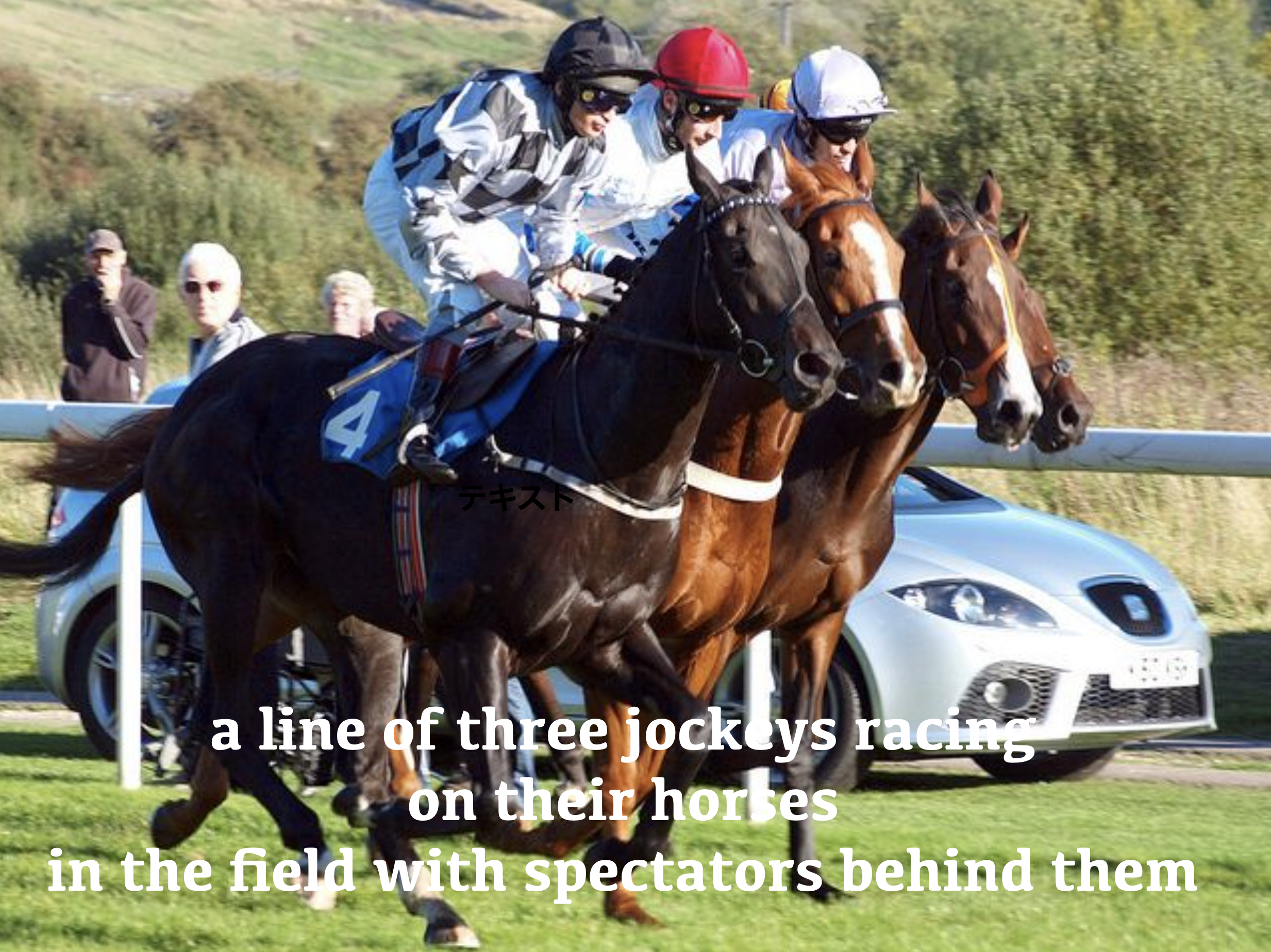
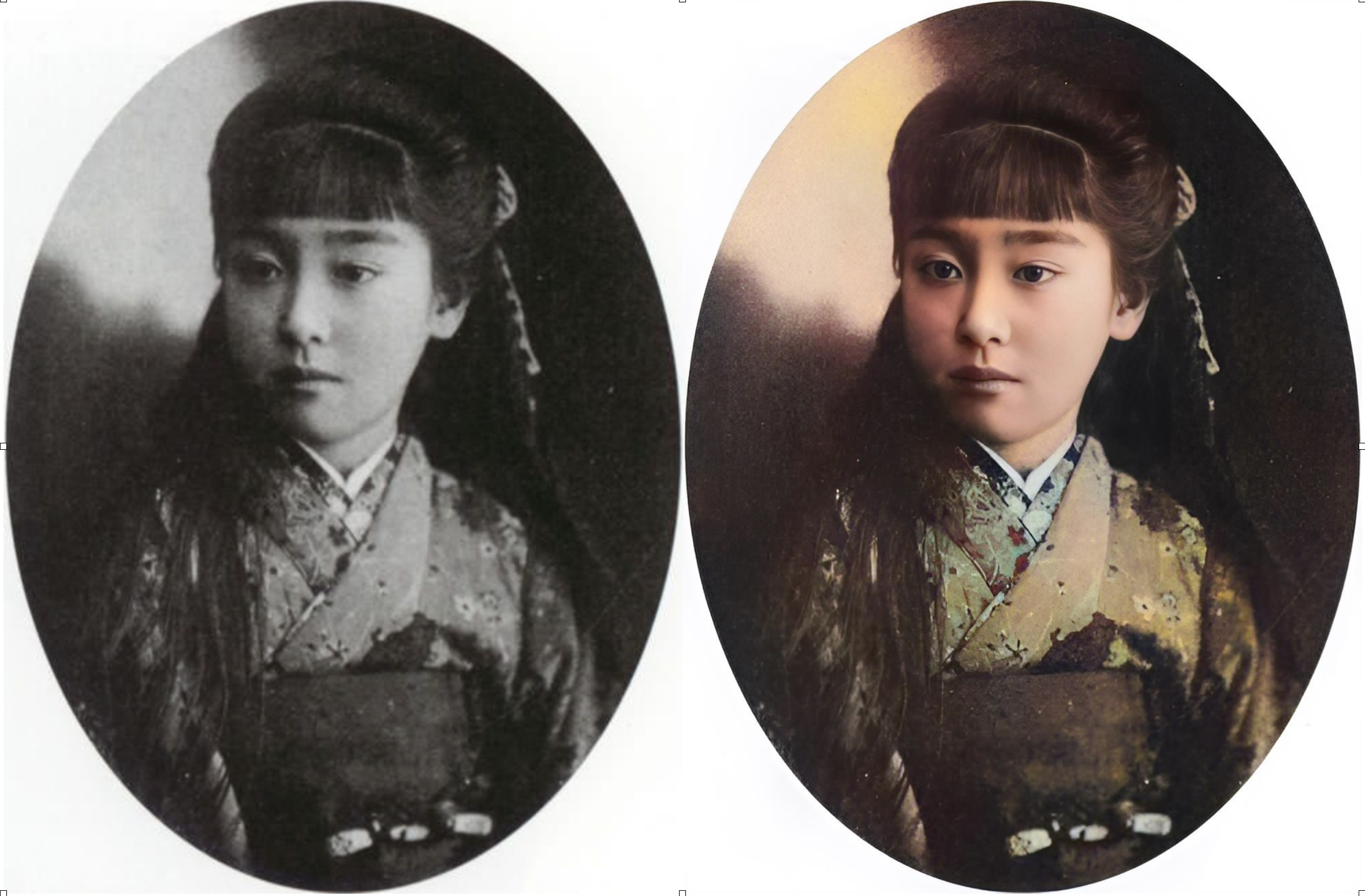
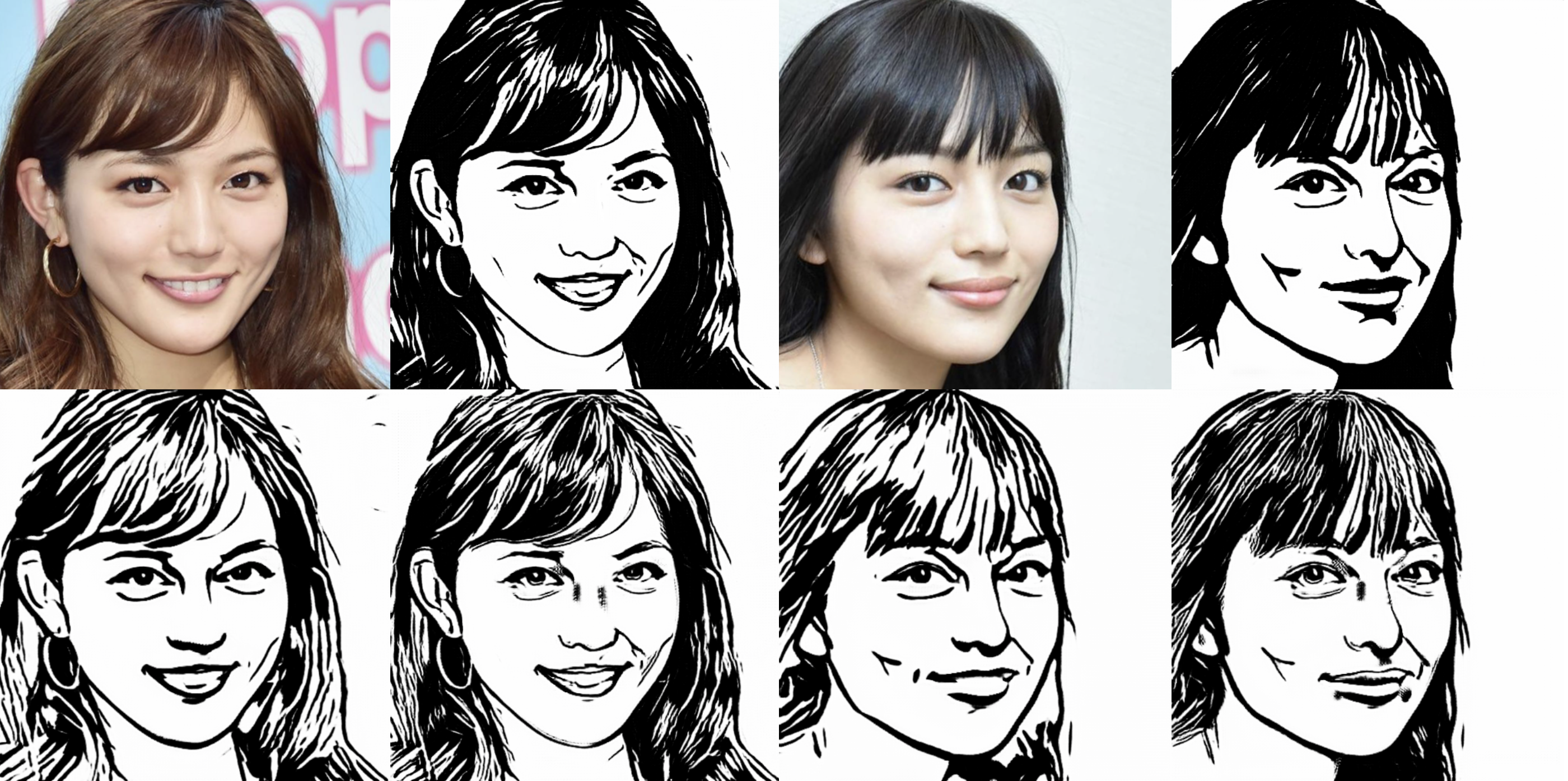

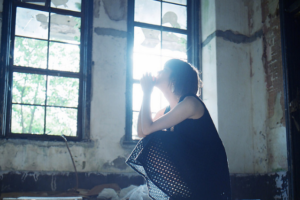


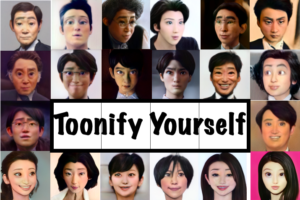
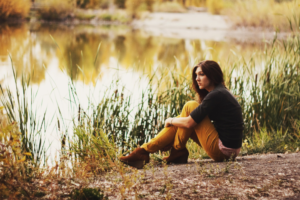

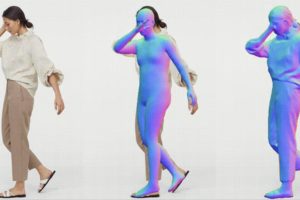
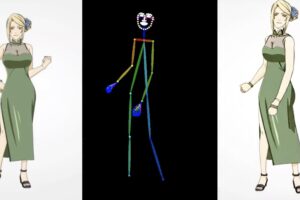

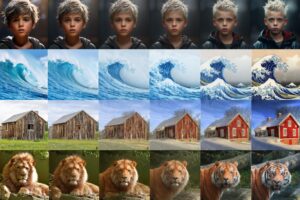

コメントを残す